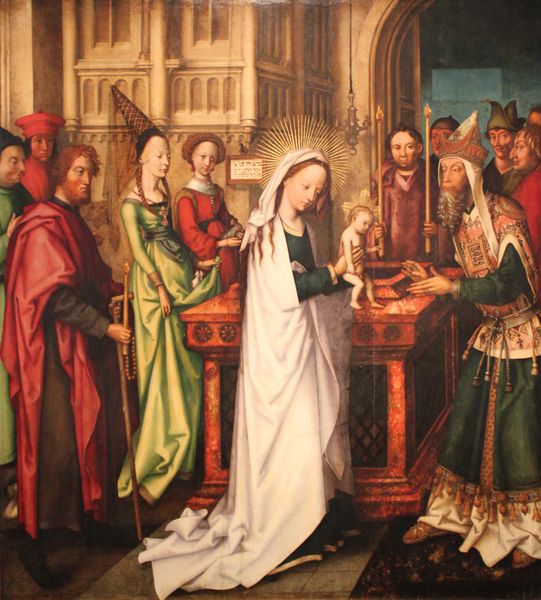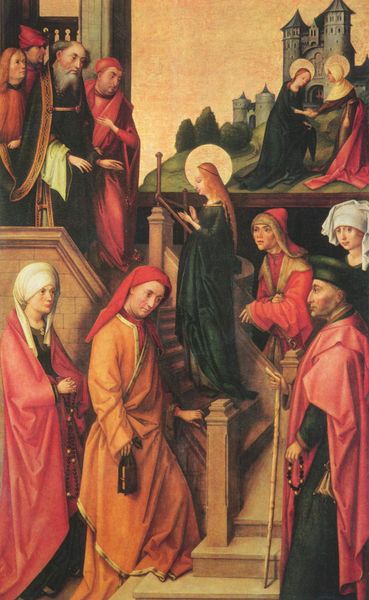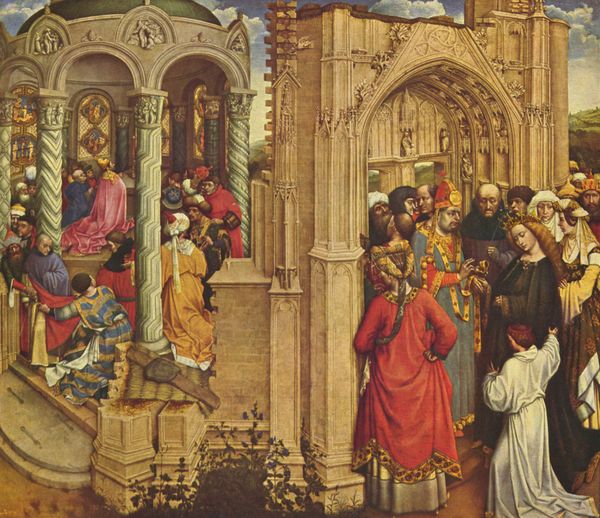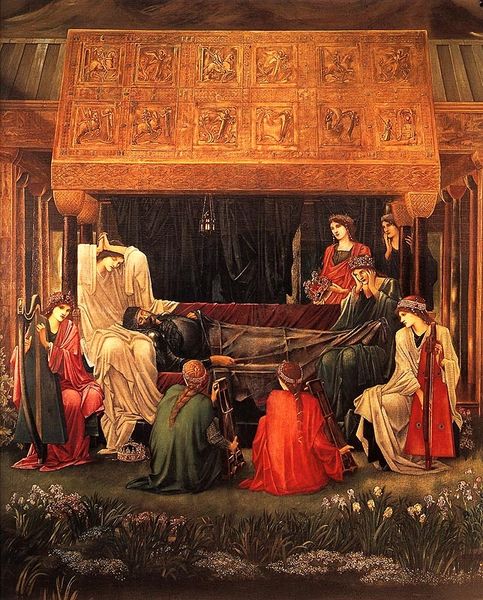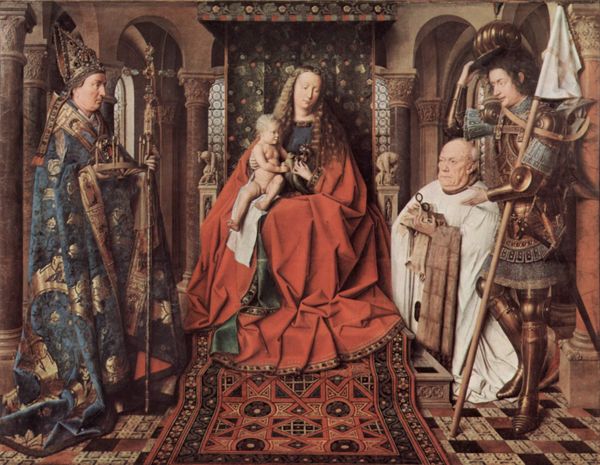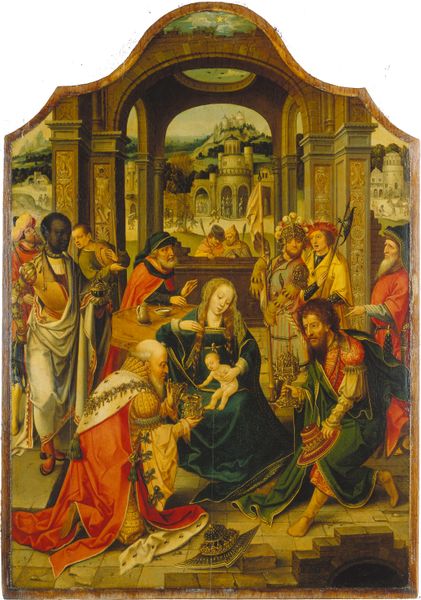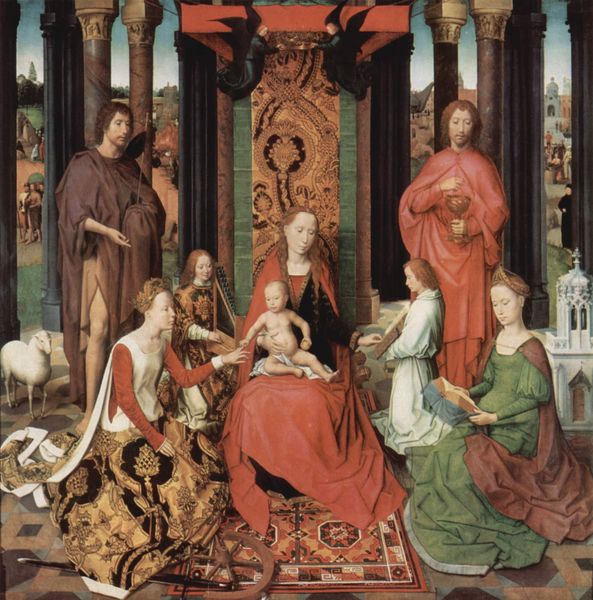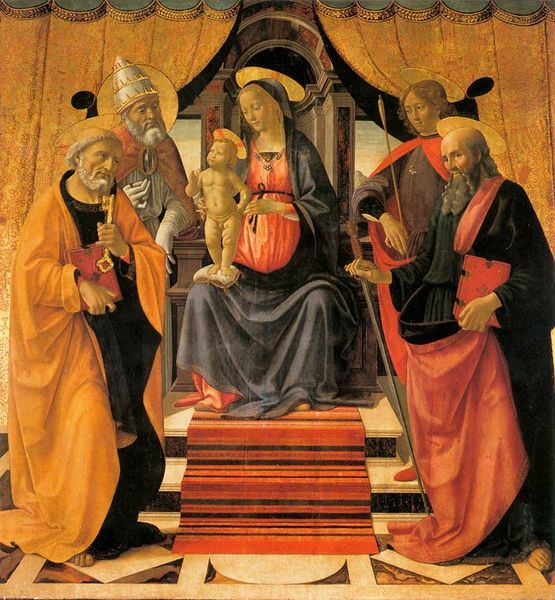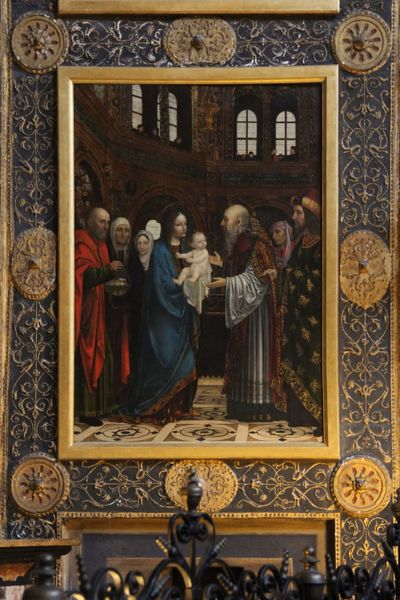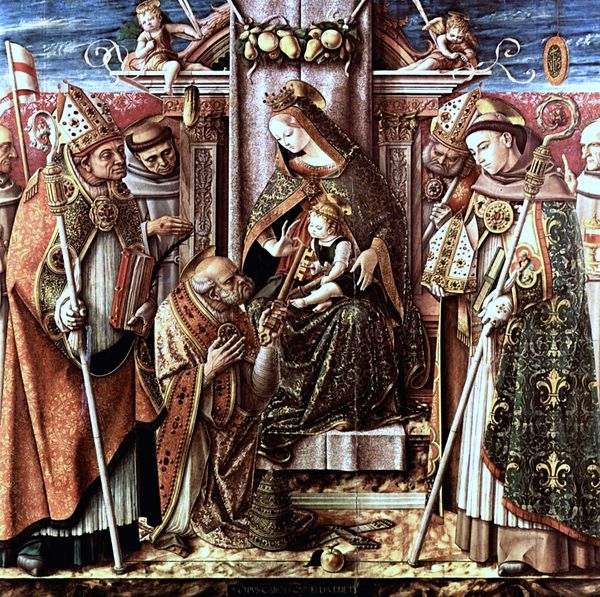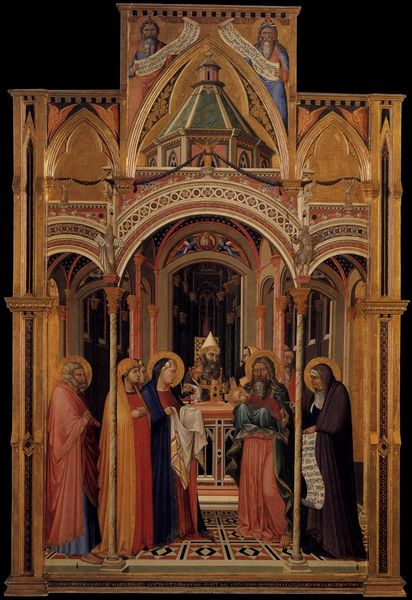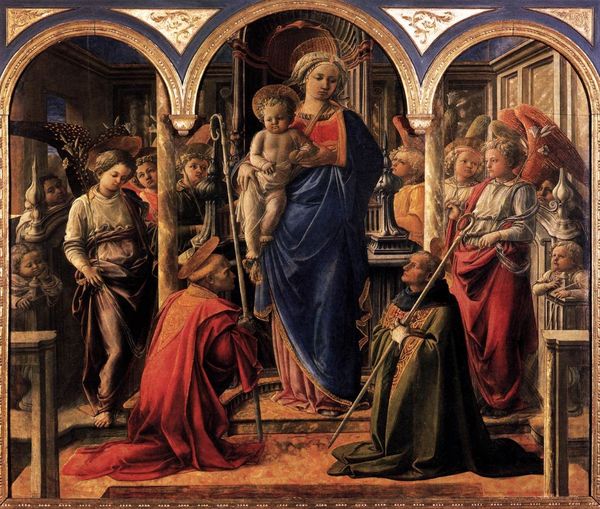
panel, painting, oil-paint
#
panel
#
narrative-art
#
painting
#
oil-paint
#
sculpture
#
furniture
#
holy-places
#
figuration
#
oil painting
#
underpainting
#
urban art
#
history-painting
#
northern-renaissance
#
academic-art
#
early-renaissance
Copyright: Public domain
Editor: So, this is Jacques Daret's "Presentation in the Temple" from 1435, oil on panel. It’s held at the Petit Palais in Paris. It's a very formal composition, almost staged, and the figures feel very contained within the architectural space. How do you interpret this work, given its historical context? Curator: Well, this piece allows us to explore the intersection of religious narratives and the socio-political realities of 15th-century society. Daret’s representation of the Temple isn't just a backdrop; it’s a constructed space reflecting the power structures of the time. How do the figures' clothing and gestures contribute to a visual hierarchy, reinforcing these power dynamics? Editor: I see what you mean. The robes and the way certain figures are positioned closer to the Christ child definitely suggests a deliberate ranking of importance. It feels like more than just a biblical scene. Curator: Exactly. Think about who was commissioning this work. Daret was connected to the Burgundian court. So we must ask: how does this representation of religious authority align with the interests and self-image of the secular powers of the day? Editor: That connection to the Burgundian court gives the scene a whole new layer. So, it’s not just about the religious narrative, but also about projecting power and legitimizing authority? Curator: Precisely. And consider the role of women in this scene, particularly Mary. Is she presented as an active participant in her son’s destiny, or a more passive vessel? Editor: That's a great point. Her gaze seems downward, submissive even. I hadn't thought about that. It’s really fascinating to see how a biblical scene can reflect the complex social dynamics of the time. Curator: Indeed. And through examining those dynamics, we begin to understand how art participates in the construction of ideology and social control. It certainly offers us a deeper, more critical engagement with art history.
Comments
No comments
Be the first to comment and join the conversation on the ultimate creative platform.
